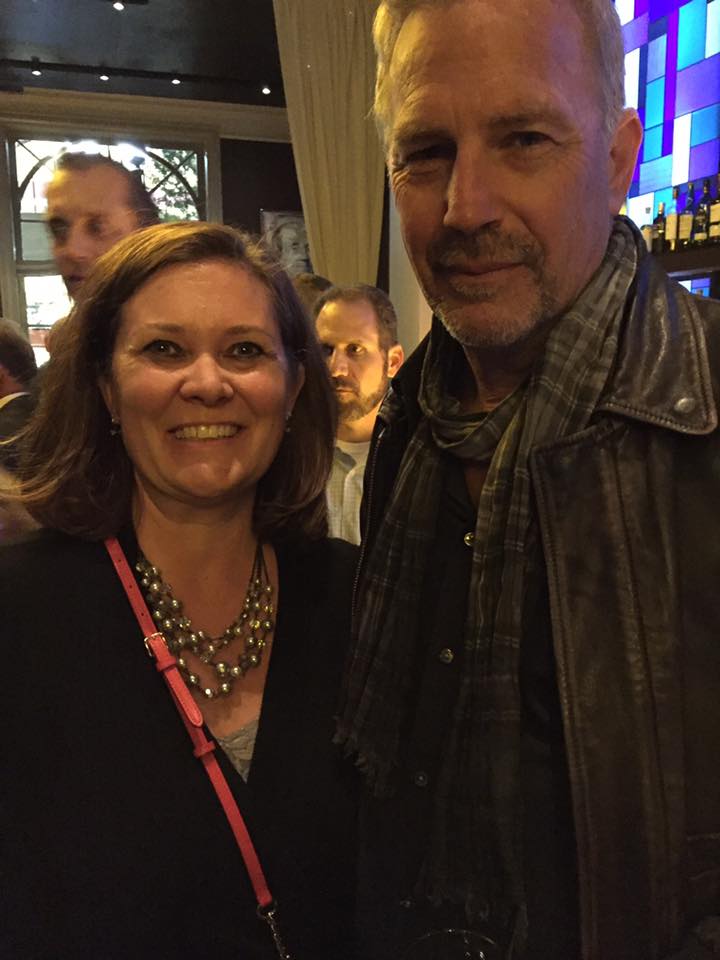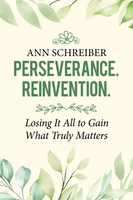
If you build it, they will come. Okay, I had to start this article with this infamous quote from the Kevin Costner film, Field of Dreams. That line, ominous stated by Ray Liotta in the 1989 films, often resonates in my head. Now I’ll admit, I’m a huge Kevin Costner fan. The Guardian is one of my all-time favorite movies—yes, I know it ends badly. I also love Hidden Figures, Message in a Bottle, the Bodyguard… My list of favorite Costner flicks could go on and on. But that’s not the topic of this article. Lead generation, however, is.
Sorry, I have to add this photo of me with Kevin Costner from back in 2016 at a private event during the Mortgage Bankers Association conference. Enjoy the photo for a moment and then continue on.

So what does that quote have to do with lead generation? Well, in the film, it means that if you put in the effort to build something worthwhile, people will naturally come to it. It’s a nice sentiment, but in the world of copywriting, it’s not enough to just set up your website and hope clients will find you. That’s why lead generation—aka lead development—is so integral to growing your business.
My Early Introduction to Lead Generation for Copywriters
So, let’s go back in time a bit to when I started my side hustle back in 2019. As I have shared in previous blogs and interviews, I have always loved to write. And in 2019, I went through a career change and the golden opportunity to start freelancing finally became something I just couldn’t pass up.
I had been introduced to Upwork just a couple of years earlier when working as the head of corporate marketing for a large business process management company. I had hired writers from time to time to help me generate content for the various industries that the company served, as I just couldn’t keep up the demands on my own. And I was quickly intrigued by all that Upwork had to offer. It was like this massive marketing and advertising platform for freelancers who had high-quality services to offer.
Fast forward back to 2019, and what did I do? Naturally, I decided to create a freelancer profile on Upwork. I set it up. I waited. And nothing happened.
While I assumed that since I had all this great experience and had set up a pretty strong profile—or so I thought—that the leads would just start rolling in. But they didn’t. Why? Because I was doing nothing. I had let myself forget what the platform was all about. Though, yes, it is a marketing and advertising tool, there were thousands and thousands of freelancers out there all vying for attention. Which means that freelancers—myself included—needed to take steps to rise to the top of the list.
This meant that I needed to go out and bid for work. And I needed to do it often. While we can talk at another time about how you might need to “undersell” yourself in the beginning to start collecting some feedback, the point is that you need to sell yourself. Once I started doing that, those leads back in 2019 started rolling in. Some of those clients I still write for today.
Why I Forgot that Lead Development Was So Important
So, let’s fast forward again. Now we’re sitting in January of 2023 as I am contemplating turning my side hustle into a full-time gig. While I still had an active Upwork profile, I hadn’t really spent any time improving it in the recent years. Full-time employment and some big life changes had gotten in the way—don’t worry, it all ended well. I had still been using the platform to communicate with clients, but it was really just being used as a communication tool and payment processing platform.
But now I was in a situation where I needed to grow that client base, and fast. To make that happen, I did a couple of things. One, I started reaching out to my existing client base to see if they had more for me. Surprisingly, they all did and my pipeline grew quickly. But, I still had an income gap of about 40% to where I had been when employed full-time. And with a severance package that would end in just a couple of months, I needed to work quickly to fill that gap and avoid unemployment.
Aside from reaching out to existing clients, I also took a seminar from another copywriter who had gone down a similar path just a few years before. Her business had grown exponentially and she was quite the role model for me. Her seminar series helped me dust off that Upwork profile to make some improvements (helpful hint: Upwork seems to add new fields to the profile section from time to time, so be sure your profile is always up to date).
During the time I was taking the seminar, I submitted proposal after proposal and eventually that income gap got smaller and smaller. By the end of March, I had so much work coming in that I stopped doing something super important—I stopped sending proposals.
Lead Development & Lead Generation Never Ends
I’m not kidding. I had so much work coming in that I was blissfully overwhelmed. And I wasn’t getting small leads. There were some whales coming in, some of which paid more than therate I was currently charging (helpful hint: if you haven’t read my article on the importance of a rate card, I highly suggest that you do so).
But here’s the thing. Things change. They really do and those changes can often come without notice. In the world of freelance work, especially on platforms like Upwork or Fiverr, projects can end abruptly. Clients can decide to pause work, shift priorities, or even run out of budget. This can leave you hanging, especially if you’re working on an hourly rate. One day you might have a full schedule, and the next, your calendar could be wide open.
This happened to me a couple of times. I had clients who suddenly decided to cut back on their projects or stop altogether. Remember how I mentioned I had some whales (for those of you without a sales background, a whale is a client with the potential of bringing you some seriously big revenue), well, the biggest white whale of them all suddenly had to scale back—bigtime.
Sometimes, pulling back is out of your client’s control, and sometimes it’s just the nature of the business. That’s why it’s so important to keep your pipeline full and always be on the lookout for new opportunities. Never assume that your current workload will stay the same forever. Because guess what happened when that whale disappeared? I didn’t have prospects waiting in the pipeline.
How to Drive Lead Generation for Copywriters
Let’s talk a bit about how to drive lead generation, especially B2B lead generation, for copywriters. But before we do, let’s talk a bit about the whole Upwork thing for just a moment. When my business, Copywriting For You, became officially official in March 2023, I was focusing exclusively on Upwork leads. At the time, I didn’t quite have the infrastructure set up to manage clients outside of a trusted platform.
But, before long, I realized that Upwork alone wasn’t going to cut it. I needed to branch out.
I started by hiring a web designer to create a website for me. And, if you’ve been following along in this blog series, you know that the first mistake I made my first year as a full-timy copywriter was going cheap and getting a poorly designed website. Thankfully, that has since been corrected and I learned the importance of the old adage, you get what you paid for.
So, back to the topic at hand. Like I said, I learned that I needed to branch out. If you are a new copywriter or content writer looking to grow your business, I suggest you branch out, too. Just be sure you do a few things before you get too far. The first is to invest in a good starter website. The next is to have an attorney or organization such as LegalShield help you create a contract and statement of work to use with those non-Upwork clients. Finally, do a pricing assessment to make sure you are pricing your copywriting and content writing services accordingly.
Steps to Generate New Content Leads
Whether you are a copywriter or content writer, you know that our business doesn’t result in sales similar to the commission a real estate agent or car sales person might achieve. While copywriting can result in revenue of thousands of dollars for great content that drives conversions, content writing isn’t always as profitable—unless you know how to do it right by following those tips I mentioned earlier, and staying on top of your lead generation efforts.
And so without further ado, here’s what you need to do to keep that pipeline healthy:
- Network Consistently: Join online communities, attend industry events, and connect with fellow freelancers. Networking can lead to referrals and collaborations.
- Optimize Your Website: Make sure your website is user-friendly and optimized for search engines. Include a blog to showcase your expertise and use SEO techniques to attract organic traffic.
- Maximize Social Media: Use platforms like LinkedIn, Twitter, Instagram, and even Pinterest to share your work, connect with potential clients, and engage with your audience. Regularly posting and interacting will keep you on the radar. This is something I’ll talk about later in this series about mistakes I made my first year as a copywriter.
- Cold Outreach: Don’t be afraid to reach out directly to potential clients. Research companies that might need your services and send personalized emails explaining how you can help them. LinkedIn is a great way to do this.
- Maintain an Updated Portfolio: Regularly update your portfolio with recent work. Upwork provides an easy way for you to update your profile. I also keep an old-fashioned Word document that includes links to some of my past client work. I send it along with every proposal and my prospective clients have loved it.
- Ask for Referrals: Don’t hesitate to ask your current clients for referrals. If they’re happy with your work, they’ll likely recommend you to others. I have received a lot of new work through referrals.
- Use Those Freelance Platforms Wisely: Platforms like Upwork and Fiverr can be great for finding new clients. Make sure your profile is up-to-date and submit proposals regularly.
- Follow Up on Old Leads: Revisit old leads or past clients who may have only needed your services temporarily. A friendly check-in can often lead to new opportunities.
Time Management and Productivity Tips for Effective Lead Generation
Okay, so I know what you’re thinking—all these lead generation efforts are going to be time-consuming. And you’re right. They are. But the fact is that B2B lead generation takes work. Yet, I’ll tell you that if you organize your day right, it doesn’t need to be a time suck. In fact, it might become part of your day that you will enjoy, immensely.
How do I manage lead generation today? I’m so glad you asked!
I’ve shared with many of you that I have put up some boundaries on my workday. These arren’t barriers, but boundaries that allow me to be as productive as possible. I know I’m not a morning person and I’m just not creative before about 11 a.m. That’s just me and who I am. So, I have established writing hours that don’t start until a time that is conducive to my creative brain. Because when you’re in the content writing business, if the words won’t come, you’re in trouble.
I also limit my client calls to just two days a week. Clients can schedule calls with me on Tuesdays and Thursdays between 11 a.m. and 4 p.m. I do this so that I can stay heads down, focused on creating my best work on my other work days. And of course, the beauty of self-employment, especially as a writer, is that I can change my writing hours at any time, depending on the mood I am in and my other life responsibilities.
Focus on Lead Management at the Beginning and End of the Writing Day
And so I know you want me to get to the question—how do I manage lead generation today? It’s simple. I use the time in the mornings before I begin writing to go through my emails and respond to anything waiting for a response, check for proposal opportunities in Upwork, and look for new gigs that might be posted on the Upwork platform.
I do the same thing at the end of the day (which yes, might be at 11 p.m. based on my day). This makes sure that I promptly respond to prospective clients, without leaving them waiting. Responsiveness is one of my value propositions and I take it very seriously.
But the key here is to figure out what works for you. If you keep starting and stopping your writing projects to check for leads and write proposals, you may end up delivering work that is less than what you are capable of. So, take some time to look at how you approach your day and set time aside to focus on new leads. And remember, no matter how full your pipeline is, treat every opportunity as revenue potential. Trust me, you’ll figure it out and it’s a good problem to have.
Building Long-Term Client Relationships
Part of the mistake I made when I failed to understand the importance of daily lead generation was forgetting about the value of my existing client relationships. And let me clarify what I mean by that. Obviously, my long-term client relationships are super important to me. They’ve been a consistent source of revenue and feedback that has helped me grow my business and let me do what I love to do every day.
However, I forgot something that I learned in all those sales trainings I learned so many years ago and throughout my career—yes, I have been in the sales space so my experience with sales methodologies such as BANT and the Miller-Heiman approach have definitely paid off for me here. I forgot that your existing client base can also be a source of incremental revenue.
Five Things to Help Grow Those Existing Client Relationships and Bring in More Revenue
Here are some simple things you can do to help grow revenue with those clients who have helped you get where you are. And the great thing is that most of these tips don’t take that long to do—plus they’ll help you grow your skills and become more valuable to your clients.
- Conduct Website Reviews: Offer to review their website periodically—or just do it on your own. Focus on areas you can improve, such as copy updates, SEO enhancements, or content refreshes. If there are areas outside your expertise, like design or technical SEO, I suggest partnering with other marketing professionals to fill those gaps.
- Suggest New Projects: Proactively suggest new work based on their current needs or industry trends. This could include creating new blog posts or increasing the cadence and frequency, updating case studies, updating old posts that are now out of date, launching email campaigns, or developing new marketing materials.
- Follow Up Regularly: When clients go quiet, don’t assume they no longer need your services. They might just be busy or thought they had sent you a project but it is sitting in their draft bin—I literally have a client like this today who just gets so bogged down in the day to day that he forgets to send me the work for the week. Reach out with a friendly check-in to see how they’re doing and if there’s anything you can assist with. This keeps you top-of-mind and can often lead to new projects.
- Offer Additional Services: Expand your services to include things like social media post development and management, content strategy, or even coaching sessions. I recently started offering this to some of my clients—offering to upload approved content on their WordPress site to help them grow visibility. In fact, this is a great strategy that can help you grow your revenue fast. Write the blogs, post the content to the client’s website, and then write social media posts that feature the blog and draw customers back to your client’s website. It’s a win-win-win value proposition.
- Request Referrals: I mentioned this one earlier, but here is where it can really pay off. While you can go to networking events, meet some new people, and ask for referrals, you’re far more likely to get those referrals from your long-standing clients. Encourage satisfied clients to refer you to others. You can even offer short-term incentives like discounts on future projects or a referral bonus to motivate them—the keyword here is short-term. Refrain from over-discounting your services or grandfathering in clients at a lower rate for too long.
Dealing with Rejection and Staying Motivated
At this point, I think you get it. Lead generation needs to be part of your copywriting and content writing process. But, I want to be very clear here. You won’t win every deal that you submit a proposal to. In fact, you’ll lose far more than you’ll win. And you might not even hear responses when you submit a proposal. It’s a sad part of the business and just something you need to be prepared for.
There are many reasons why you might not win a proposal. Sometimes, it’s about pricing. Your rates might be too high or too low compared to the competition. Timing can also be a factor; maybe the client needed someone to start immediately and you weren’t available. A poorly written proposal can also hurt your chances. Make sure your proposals are clear, concise, and tailored to each client’s specific needs. Using tools like Loom to create personalized video proposals can set you apart and add a personal touch.
The overall competition is another significant factor. According to Zippia, there are 4,882 freelance copywriters currently employed in the United States—but I suspect that number is actually quite higher. And worldwide, there are easily hundreds of thousands or even millions of freelancers competing for similar projects.
Even if you never receive feedback on why you didn’t win a proposal, take each experience as a learning opportunity. Reflect on what you could improve next time. Was your pricing competitive? Did you showcase relevant experience? Was your proposal well-written and engaging? Constantly refine your approach based on these reflections.
Remember, rejection is part of the process. Stay motivated by setting small, achievable goals and celebrating your successes, no matter how small. Keep honing your skills, learning from each experience, and maintaining a positive outlook. It’s worth it.
Lead Development is an Iterative and Ongoing Process
Lead generation is a continuous process that demands perseverance—you’ll learn that perseverance is one of my favorite words—and strategic effort. Don’t let setbacks discourage you; every experience is a stepping stone to success.
If you’re looking for expert copywriting or content writing services to elevate your business, reach out to Copywriting For You today. And don’t forget to check out my new book, Perseverance. Reinvention., which combines personal narrative, practical advice, and reflective journaling, detailing my path to becoming a successful copywriter. Let’s grow together!


